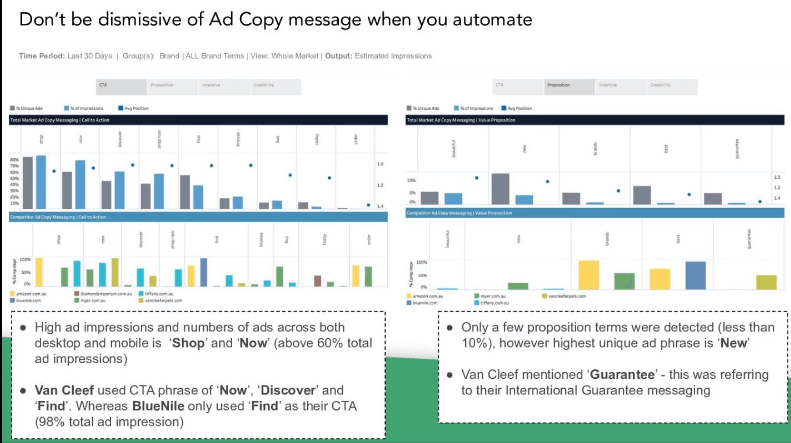The paid search marketing landscape continues to grow by leaps and bounds. Google Ads, in particular, is leading the charge, no doubt spurred on by the societal changes of the past couple of years.
“We know this channel is growing year over year,” said Ashley Fletcher, VP of marketing at Adthena, in a recent webinar. “It’s not going away anytime soon. Digital ad use is growing 26% year over year, and Google search itself is having a record-breaking quarter.”
Yet with this growth comes some major changes — the disappearance of expanded text ads, restrictions on third-party cookies, and more automation — that will affect paid search marketers everywhere.
It can be difficult for marketers to remain competitive in a constantly changing search environment. To address its challenges, Fletcher offered three ways marketers could stay ahead of the game.
Optimize for local markets
“Everyone knows how buyer behavior has changed in the past two years,” said Fletcher. “More markets are local now.”
Not all brands have made smooth transitions to local markets during this period. Fletcher noted that many organizations fail to optimize for the most pertinent localities — whether they be at the state or city level.
To gain a better view of their local markets, he suggested marketers create visualizations using data modeling tools (such as Google Data Studio) to pinpoint areas of opportunity. Reports like these aggregate both competitor and audience data to highlight actionable markets.

Once competitor movements are mapped out at each of these local levels, Fletcher recommends marketers segment their ad groups by ROI. This can help them focus their efforts on the most profitable local targets.
Predict outcomes with share of search
“Share of search” is a relatively new metric marketers use to determine their brand’s market share online. According to Fletcher, the increasing importance of search makes this a vital touchstone when predicting campaign outcomes.
“Search is the channel where the conversion happens,” Fletcher said. “As spend rises in Google Ads, this is the part of the funnel that’s critical for brands.”
He pointed to the formula marketers use to determine their share of search, which relies on how often audiences are searching for your particular brand when compared to all other brands in its category.

“You can use this [formula] in Google Trends as well,” said Fletcher. “If you plug in your top three brands terms, you can start to build a picture . . . It gives you that maximum, whole market view.”
In his view, share of search can help marketers guide their brands toward smarter paid search decisions.
“You want your reaction time to increase,” he said. “You want the data coming through to be faster, and you want channel confidence to grow.”
Optimize ads using competitive and contextual insights
“Ad copy can be easily overlooked,” Fletcher said. “Getting back on track regarding how it can drive incremental gains for marketers and brands is key.”
To get the most actionable competitive insights from ad copy, Fletcher suggests marketers adopt AI tools to automate the process. This can help segment each ad by category and market group.

“We use this [process] when a competitor comes out with new phrases for their CTAs,” he said. “Words like ‘now,’ ‘discover,’ ‘find,’ and whatever else they’re using for their CTAs should inspire your team to adjust its copy.”
However, using competitor keywords is just one part of effective ad copy optimization. The recent changes in market behavior also require marketers to optimize ad text with key customer needs in mind. Audiences expect frictionless experiences, and paid search teams must craft ad copy that speaks to their specific context.
“How prominent are [contextual terms] in a large sample of your ad copy?” he asked. “You wouldn’t want to be the person not included — the last one to find out about curbside pickup or next-day delivery.”
“From the customers’ perspective, everyone wants a frictionless experience, and all of that comes through in the language of your ad copy,” he added.
Watch the full SMX Next presentation here (free registration required).
The post How to be a competitive paid search marketer in 2022 appeared first on Search Engine Land.
No comments:
Post a Comment